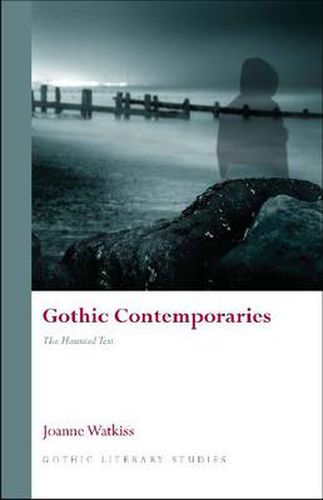Readings Newsletter
Become a Readings Member to make your shopping experience even easier.
Sign in or sign up for free!
You’re not far away from qualifying for FREE standard shipping within Australia
You’ve qualified for FREE standard shipping within Australia
The cart is loading…






The main market for this book will be academic scholars and students of gothic studies (both international and UK based). An increasing number of universities have a gothic studies module at undergraduate level and, as an emerging discipline, the gothic is a popular theme for dissertation study. Therefore, it is anticipated that this book will have a wide undergraduate readership in university libraries as well as by individual purchase. Similarly, due to a multitude of MA courses focusing primarily on gothic studies, this book will have a postgraduate as well as undergraduate readership. PhD students exploring the gothic will also be interested in the topics explored in the book. Students outside of gothic studies will also find the book useful in its original exploration of contemporary fiction - in particular 21st century Irish and American texts. As three of the primary texts are Booker Prize winners, this will also draw readership (most recently Hilary Mantel with Wolf Hall in 2009). Due to the 21st century contexts of the novels under examination, this study could potentially be the first published work of criticism on those texts. Due to its deconstructive approach, the book will also draw readers interested in Derrida’s late 20th century work (of which there is limited criticism). Students studying literary theory will benefit from the utilisation of contemporary theory alongside contemporary texts. As an interdisciplinary work, students and academics interested in architecture and film will also find the book an interesting source of contemporary exploration. As for lay readership, this text promotes a creative approach to reading that does not close itself off to non-academic readers. Instead, the book encourages an openness to all texts in an appreciation of close reading and enjoyment. Readers of contemporary fiction will encounter a creative exploration of themes not subject to heavy literary criticism or theoretical digressions. Whilst an academic piece of work, this book attempts to provide an insight into the experience of space (and text) in everyday life, in particular, why certain spaces are more uncanny than others.
$9.00 standard shipping within Australia
FREE standard shipping within Australia for orders over $100.00
Express & International shipping calculated at checkout
The main market for this book will be academic scholars and students of gothic studies (both international and UK based). An increasing number of universities have a gothic studies module at undergraduate level and, as an emerging discipline, the gothic is a popular theme for dissertation study. Therefore, it is anticipated that this book will have a wide undergraduate readership in university libraries as well as by individual purchase. Similarly, due to a multitude of MA courses focusing primarily on gothic studies, this book will have a postgraduate as well as undergraduate readership. PhD students exploring the gothic will also be interested in the topics explored in the book. Students outside of gothic studies will also find the book useful in its original exploration of contemporary fiction - in particular 21st century Irish and American texts. As three of the primary texts are Booker Prize winners, this will also draw readership (most recently Hilary Mantel with Wolf Hall in 2009). Due to the 21st century contexts of the novels under examination, this study could potentially be the first published work of criticism on those texts. Due to its deconstructive approach, the book will also draw readers interested in Derrida’s late 20th century work (of which there is limited criticism). Students studying literary theory will benefit from the utilisation of contemporary theory alongside contemporary texts. As an interdisciplinary work, students and academics interested in architecture and film will also find the book an interesting source of contemporary exploration. As for lay readership, this text promotes a creative approach to reading that does not close itself off to non-academic readers. Instead, the book encourages an openness to all texts in an appreciation of close reading and enjoyment. Readers of contemporary fiction will encounter a creative exploration of themes not subject to heavy literary criticism or theoretical digressions. Whilst an academic piece of work, this book attempts to provide an insight into the experience of space (and text) in everyday life, in particular, why certain spaces are more uncanny than others.